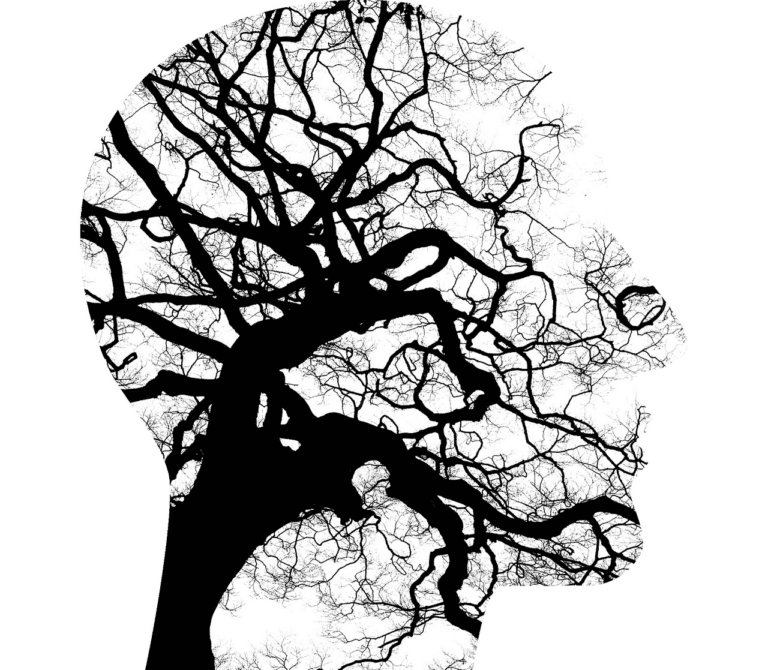Understanding Personal Construct Theory Essentials
Personal Construct Theory, developed by George Kelly, is a cognitive psychology framework that explores how individuals construct their own unique mental frameworks, known as personal constructs, to interpret the world around them. These constructs shape our perceptions, behaviors, decision-making processes, and even our self-concept. Understanding the key concepts of Personal Construct Theory can provide valuable insights into human cognition, personality assessment, psychotherapy, and personal growth.
Key Takeaways:
- Personal Construct Theory, developed by George Kelly, explores how individuals create personal constructs to make sense of the world.
- Personal constructs are mental frameworks unique to each person and shape how we interpret our experiences and relate to others.
- Constructive Alternativism is a key concept in Personal Construct Theory, suggesting that personal constructs are open to multiple interpretations and can be modified based on new experiences.
- Using personal constructs is similar to the scientific method, involving hypothesizing, testing, and modifying constructs based on predictions.
- Personal constructs play a crucial role in self-concept, coping strategies, and mental health.
George Kelly and His Personal Construct Theory
Psychologist George Kelly introduced personal construct theory as a groundbreaking alternative to traditional approaches in psychology. Kelly viewed individuals as active researchers, constantly seeking to understand and predict the world around them. According to Kelly, personal constructs serve as cognitive frameworks that enable us to interpret events and make predictions. These constructs are mental representations shaped by our unique experiences and can be modified to accommodate new information, demonstrating our cognitive flexibility.
“A personal construct is a way of interpreting and organizing an individual’s experiences in the world. It serves as a lens through which we view the world, allowing us to make sense of our surroundings and anticipate future outcomes.”
– George Kelly
The Cognitive Frameworks of Personal Construct Theory
At the core of Kelly’s theory are cognitive frameworks known as personal constructs. These constructs are subjective mental categories that enable us to categorize and make sense of the world. Personal constructs act as filters through which we perceive reality, shaping our thoughts, emotions, and behaviors. They provide a structure for organizing information and guiding our interactions with others. These constructs can range from simple to complex, and may encompass various aspects of life, including relationships, work, and personal values.
Personal constructs enable us to make predictions about future events based on previous experiences. By applying our constructs to new situations, we can anticipate outcomes and adjust our responses accordingly. The process of using personal constructs allows us to navigate the complexities of the world and adapt to changing circumstances.
Understanding Mental Constructs and Cognitive Flexibility
Personal constructs are not fixed or static; they can be revised, expanded, or even discarded as we encounter new information and experiences. This concept of cognitive flexibility, central to Kelly’s theory, emphasizes our capacity to adapt and modify our mental constructs in response to changing circumstances. It highlights the dynamic nature of human cognition and our ability to reevaluate and refine our understanding of the world.
Through cognitive flexibility, we can challenge our existing beliefs and perspectives, leading to personal growth and new insights. Embracing cognitive flexibility allows us to break free from rigid thinking patterns and opens up opportunities for creativity and problem-solving.
The Mental Construct Process: From Interpretation to Prediction
In personal construct theory, the process of using constructs is akin to the scientific method. We form hypotheses based on our constructs and make predictions about future events. If our predictions align with the outcomes, we reinforce and maintain the constructs. If our predictions prove inaccurate, we may modify or abandon the constructs, refining our understanding of the world in the process.
This iterative process of hypothesizing, testing, and modifying constructs allows us to continually update and refine our personal theories about the world. It enables us to adapt and navigate through complex situations, enhancing our understanding and decision-making abilities.
The Interactive Elements of Personal Construct Theory
Personal construct theory emphasizes the interactive nature of our constructs and the reciprocal relationship between our thinking and the world around us. Our personal constructs influence our perceptions, attitudes, and behaviors, while our experiences and interactions shape and reshape our constructs. This bidirectional relationship highlights the dynamic interplay between our minds and the social and environmental contexts in which we exist.
| Key Components | Description |
|---|---|
| Personal Constructs | Subjective mental categories used to interpret and categorize experiences. |
| Cognitive Flexibility | The ability to modify and adapt personal constructs based on new information. |
| Predictions | The use of personal constructs to anticipate future outcomes. |
| Mental Constructs | Mental representations that shape our perceptions and guide our behavior. |
| Cognitive Frameworks | Structures that organize and interpret information based on personal constructs. |
The Role of Constructs in Interpreting the World
Personal constructs play a vital role in how we interpret the world. They are cognitive categories that allow us to make sense of people, objects, and events based on our unique experiences. These constructs shape our perceptions, behaviors, decisions, beliefs, and interpersonal relationships.
When we encounter new situations or encounter familiar ones with different contexts, our mental frameworks, or personal constructs, guide our interpretation. Our interpretation is influenced by our past experiences, cultural background, and individual perspective. These constructs help us categorize information and organize our thoughts. By using cognitive categories, we can process information more efficiently and develop a better understanding of the world around us.
Through our personal experiences, we form cognitive categories specific to our individual perspective. This means that each person’s constructs are unique to them and may differ from others. For example, two individuals may have different interpretations of the same event based on their unique constructs.
By understanding the role of constructs in interpreting the world, we gain insights into the complexity of human perception and cognition. Our personal constructs provide a framework through which we filter and make sense of our experiences. They influence our thoughts, emotions, and actions, shaping our overall perspective of the world.
Our personal constructs act as filters through which we interpret reality. They are like lenses that color our perception and influence our understanding of the world.
Examples of Personal Constructs
Here are some examples of personal constructs:
- Beauty vs. Ugliness
- Good vs. Evil
- Trust vs. Suspicion
- Success vs. Failure
- Love vs. Hate
These constructs help us categorize and evaluate people, objects, and events based on our unique experiences and perspectives.
The Influence of Personal Constructs
Our personal constructs not only shape our interpretation of the world but also influence our behaviors, decisions, and beliefs. They play a significant role in our interactions and relationships with others.
For example, if we have a construct that categorizes people as trustworthy or untrustworthy, it can impact how we approach relationships and interact with others. This construct may lead us to be cautious or open in our interactions, depending on our past experiences with trust.
Furthermore, personal constructs can impact our self-perception. If we have a construct that defines success as financial wealth, we may feel a sense of accomplishment and self-worth when we achieve monetary goals. On the other hand, if our construct of success is based on personal fulfillment and happiness, our self-perception may be influenced by our level of contentment.
The influence of personal constructs extends beyond interpersonal relationships and self-perception. They also shape our decision-making processes and the values we hold dear.
The Importance of Recognizing Personal Constructs
Recognizing our personal constructs is essential for gaining self-awareness and understanding the perspectives of others. It allows us to challenge our biases, expand our cognitive flexibility, and develop empathy.
By acknowledging that personal constructs are unique to each individual, we can foster a greater appreciation for diverse perspectives and experiences. This recognition helps us approach situations with an open mind and facilitates effective communication and collaboration with others.
Overall, personal constructs are powerful tools that shape how we interpret the world. Understanding their influence can lead to personal growth, improved relationships, and a broader understanding of the complexities of human cognition.
| Key Points | Benefits of Understanding Personal Constructs |
|---|---|
| Awareness of our cognitive categories and filters |
|
| Influence on behavior and beliefs |
|
| Impact on relationships |
|
Constructive Alternativism and Multiple Perspectives
According to George Kelly’s personal construct theory, personal constructs are not fixed entities but rather open to multiple interpretations, leading to the concept of constructive alternativism. This means that individuals have the cognitive flexibility to choose which construct to apply to a given situation and are capable of changing their perspectives over time based on new experiences.
Constructive alternativism allows individuals to have multiple interpretations of the same event or situation. This flexibility in mental frameworks enables them to adapt and respond more effectively to the complexities of the world. By embracing different perspectives, individuals can gain a deeper understanding of themselves, others, and the environment around them, leading to more dynamic and informed decision-making processes.
Cognitive flexibility is a key attribute of constructive alternativism. It implies the ability to shift between different mental frameworks and consider various viewpoints. This cognitive flexibility enhances problem-solving skills, creativity, and innovation, promoting more adaptable and comprehensive approaches to situations and challenges.
Changing perspectives can also lead to personal growth and development. By reevaluating and redefining personal constructs, individuals can break free from rigid ways of thinking and gain new insights. This process fosters cognitive complexity and broadens mental horizons, bringing about fresh understandings and ideas.
“Constructive alternativism suggests that the world is not deterministic or fixed, but rather open to multiple interpretations. It allows individuals to embrace the power of perspective and actively engage in shaping their realities.”
Multiple Interpretations
One of the core tenets of constructive alternativism is the recognition that personal constructs can be interpreted in various ways. This concept challenges the notion of a single universal truth and emphasizes the importance of individual subjectivity. Multiple interpretations allow for a nuanced understanding of complex situations, encouraging critical thinking and empathy.
Mental Frameworks and Cognitive Flexibility
Constructive alternativism is closely linked to mental frameworks, also known as personal constructs. These frameworks shape our perceptions, judgments, and decision-making processes. With cognitive flexibility, individuals can navigate between different mental frameworks, enabling a more comprehensive and adaptive approach to understanding the world.
To illustrate the concept of constructive alternativism, consider the example of a glass half full or half empty. Depending on an individual’s personal constructs, they may interpret this situation in different ways. Some might focus on the positive aspect of a half-full glass, while others may emphasize the negative aspect of a half-empty glass. Both interpretations are valid and can coexist, highlighting the richness and diversity of human perspectives.
Changing Perspectives
Constructive alternativism recognizes that perspectives can change over time. As individuals gain new experiences and insights, their mental frameworks can evolve, leading to shifts in interpretations and understandings. This openness to change allows for personal growth, adaptability, and the continuous refinement of cognitive constructs.
By embracing constructive alternativism and recognizing the potential for multiple interpretations, individuals can expand their mental horizons, foster cognitive flexibility, and develop a richer understanding of themselves and the world around them.
| Benefits of Constructive Alternativism | Examples |
|---|---|
| Cognitive flexibility | Considering various viewpoints in a team project |
| Enhanced problem-solving skills | Exploring different approaches to a complex problem |
| Increased creativity and innovation | Generating novel ideas by challenging conventional thinking |
| Personal growth and development | Transforming outdated beliefs through new experiences |
| Improved interpersonal relationships | Empathizing with diverse perspectives and fostering understanding |
The Process of Using Constructs
Using personal constructs is akin to the scientific method. It involves hypothesizing, testing, making predictions, and determining if construct modification or abandonment is necessary. This iterative process allows us to refine our personal theories about the world.
Hypothesizing
When utilizing personal constructs, we start by hypothesizing that a particular construct will apply to a specific event or situation. This involves formulating a preliminary idea or assumption based on our existing constructs and knowledge.
Testing
After hypothesizing, we proceed to test our construct by predicting the outcome of a given event or situation. We observe the results and compare them to our predictions to determine if the construct accurately explains or relates to the situation.
“The formulation of a hypothesis, then, is like exhibiting a construct to yourself. You use it as a way of representing a situation to yourself and predicting the meaning or outcome of subsequent events.” – George Kelly (First source)
Predictions
Predictions play a crucial role in the process of using personal constructs. By making predictions based on our hypothesized constructs, we gain insights into the potential outcomes of various events or situations. This helps us understand the world around us and how our constructs influence our interpretations.
Construct Modification and Abandonment
If our predictions align with the actual outcomes, we retain the construct and continue to apply it in similar situations. However, if our predictions prove to be incorrect or our construct fails to provide a satisfactory explanation, we may consider modifying or abandoning the construct.
Construct modification involves refining the construct based on new information and experiences, allowing for adaptive adjustments to our understanding of the world. Construct abandonment, on the other hand, entails discarding a construct that no longer holds explanatory power or fails to provide meaningful insights.
Construct Modification and Abandonment
| Construct | Prediction | Outcome | Action |
|---|---|---|---|
| Construct A | The event will result in X. | The event resulted in X. | No action needed. Retain construct. |
| Construct B | The event will result in Y. | The event resulted in Z. | Modify construct. Reframe prediction based on new outcome. |
| Construct C | The event will result in P. | The event resulted in Q. | Abandon construct. It does not align with observed outcomes. |
Recurrences and Organized Constructs
Personal constructs play a fundamental role in how we interpret and make sense of the world around us. These constructs are not randomly formed but emerge based on recurrences in our lives. They are the result of repetitive experiences that shape our cognitive framework and help us navigate through various situations.
One key characteristic of personal constructs is their organization in a hierarchical manner. At the base of this hierarchy, we have more basic constructs that form the foundation of our understanding. These foundational constructs act as building blocks, providing us with a structure from which we can develop more complex constructs at higher levels.
Furthermore, George Kelly, the founder of personal construct theory, believed that constructs are bipolar in nature. This means that each construct consists of two opposing sides or poles. For example, a construct may have an emergent pole and an implicit pole, representing two contrasting ways of perceiving or interpreting a particular situation or experience.
By organizing constructs hierarchically and recognizing their bipolar nature, we are able to create a cognitive framework that allows us to make sense of the diverse and complex world we inhabit.
Key points:
- Personal constructs are not randomly formed but emerge based on recurring events in our lives.
- Constructs are organized in a hierarchical manner, with more basic constructs at the base and more complex constructs at higher levels.
- Constructs are bipolar, consisting of two opposing sides or poles.
Understanding the recurrences and organized constructs in personal construct theory provides us with valuable insights into how our cognitive framework operates and how we construct meaning in our lives.
“The more hierarchically organized our personal constructs are, the better equipped we are to navigate through the complexities of the world.” – George Kelly
Personal Constructs and Mental Health
Personal constructs play a significant role in influencing mental health and overall well-being. The unique cognitive frameworks we develop shape how we perceive ourselves, others, and the world around us. Negative thinking, which often contributes to psychological distress, can be attributed to maladaptive constructs that influence our thoughts and behaviors.
Cognitive-behavioral therapy (CBT) is an effective therapeutic approach that aims to challenge and modify negative thinking patterns. By identifying and restructuring harmful constructs, individuals can develop more adaptive and positive thought patterns, leading to improved mental well-being.
Another therapeutic approach that focuses on personal constructs is personal construct therapy (PCT). PCT emphasizes understanding and restructuring a person’s constructs to alleviate psychological problems. This therapy recognizes that each individual’s constructs are unique and considers the influence of cultural background in tailoring treatments for optimal outcomes.
Addressing personal constructs in therapy can have a profound impact on mental health and well-being. By exploring and modifying maladaptive constructs, individuals can experience positive changes in their thoughts, emotions, and behaviors, leading to improved overall mental well-being and a higher quality of life.
The Role of Constructs in Self-Concept and Coping
Personal constructs play a crucial role in shaping our self-concept and personal identity. They are the mental frameworks through which we interpret ourselves and make sense of who we are in relation to the world around us.
When we encounter stressful situations, these constructs also influence how we cope. Our personal constructs shape our perceptions, thoughts, and behaviors, guiding our responses to challenging circumstances. They can either help us navigate through difficulties or hinder our ability to effectively cope.
By understanding our unique constructs, we gain valuable insights into ourselves. We become more aware of the beliefs, values, and expectations that define our self-concept. This self-awareness allows us to make intentional choices about how we want to perceive ourselves and how we want to respond to stressful situations.
Furthermore, understanding our personal constructs helps us develop more effective coping strategies. We can identify any maladaptive constructs that may be contributing to our stress and actively work to modify or replace them with more adaptive ones. This introspective process enables us to build resilience and enhance our ability to cope with challenging circumstances.
“Our personal constructs shape our self-concept and personal identity.”
The Impact on Self-Concept
Our self-concept is a vital aspect of our overall psychological well-being. It encompasses our beliefs, values, traits, and roles, forming a multidimensional understanding of ourselves. Personal constructs influence how we perceive and define these elements of our self-concept.
By recognizing the role of our personal constructs, we gain insight into how they shape our self-image and guide our behavior. This self-awareness empowers us to shape our self-concept in a way that aligns with our values, aspirations, and personal growth goals.
Improving Coping Strategies
In the face of stressful situations, our personal constructs heavily impact our coping strategies. Depending on our unique constructs, we may employ different cognitive, emotional, or behavioral strategies to manage stress.
- Some individuals may have constructs that encourage problem-solving and seeking social support when faced with stress.
- Others may develop constructs that lead to avoidance or withdrawal as a coping mechanism.
- There are also individuals whose constructs promote the use of positive self-talk, reframing, or mindfulness techniques.
Recognizing the influence of our personal constructs on our coping strategies allows us to evaluate the effectiveness of our current approaches. We can explore alternative construct interpretations and coping strategies that align with our desired outcomes for managing stress.
“Understanding our personal constructs allows us to develop more effective coping strategies.”
By developing a deeper understanding of our personal constructs and their impact on our self-concept and coping mechanisms, we empower ourselves to navigate life’s challenges with more resilience, self-awareness, and adaptive responses.
Conclusion
Personal Construct Theory, developed by George Kelly, provides a unique understanding of personality and cognition. By acknowledging the role of individual constructs in shaping our perceptions and behaviors, we can gain valuable insights into ourselves and others. This theory has practical applications, particularly in the field of psychotherapy and personal growth.
Using Cognitive Frameworks, Personal Construct Theory recognizes that our mental constructs act as cognitive frameworks that help us make sense of the world. These constructs are highly personalized and influence how we interpret and respond to our experiences.
Cognitive Flexibility is a key concept in Personal Construct Theory. It emphasizes our capacity to modify and adapt our constructs based on new information and experiences. This flexibility allows us to develop a more comprehensive understanding of the world and adjust our perspectives accordingly.
In the context of psychotherapy, Personal Construct Theory offers valuable insights into the cognitive processes underlying psychological issues. Psychotherapists can use this theory to explore and restructure maladaptive constructs, ultimately promoting mental well-being and positive change.
Source Links
- https://www.verywellmind.com/what-is-personal-construct-theory-2795957
- https://open.baypath.edu/psy321book/chapter/c14p2/
- https://en.wikipedia.org/wiki/Personal_construct_theory






